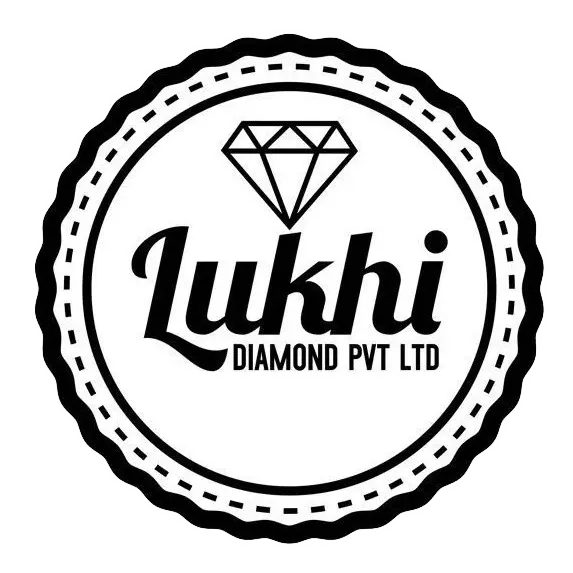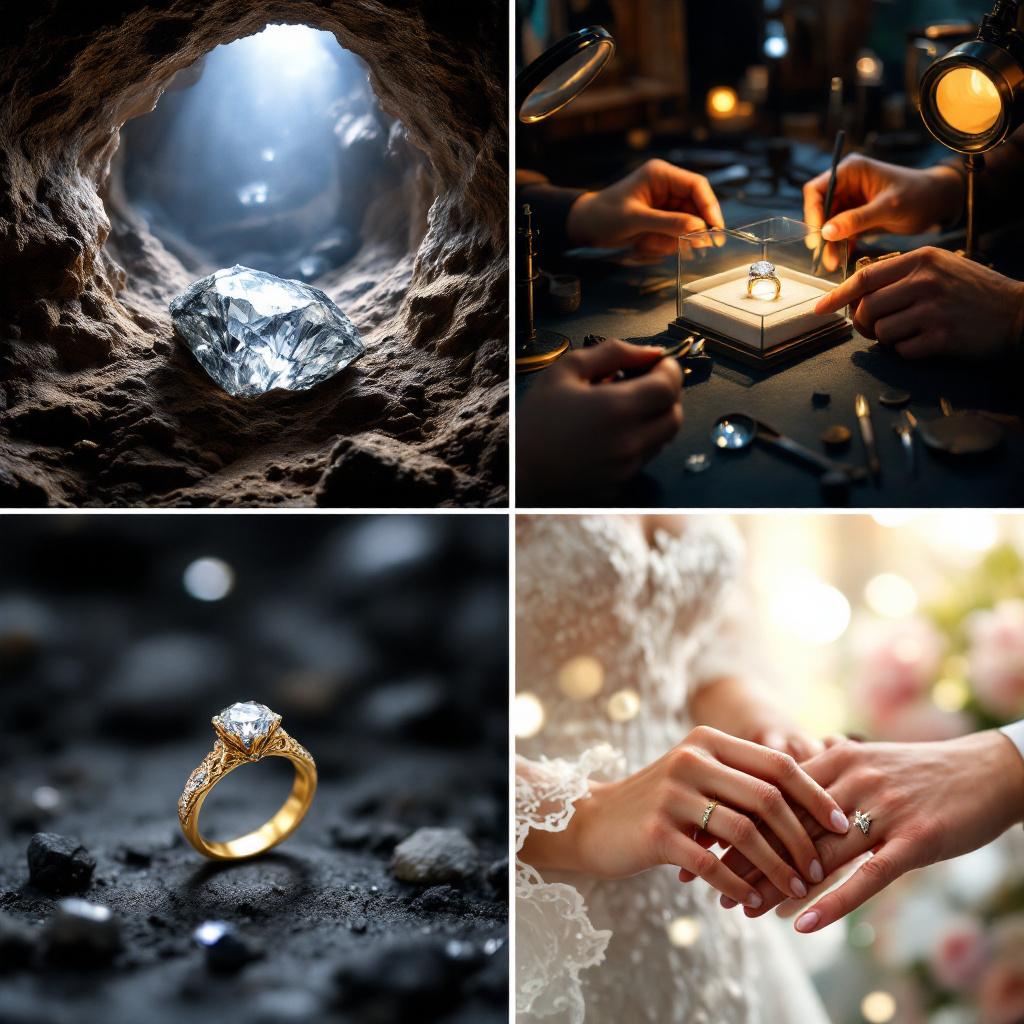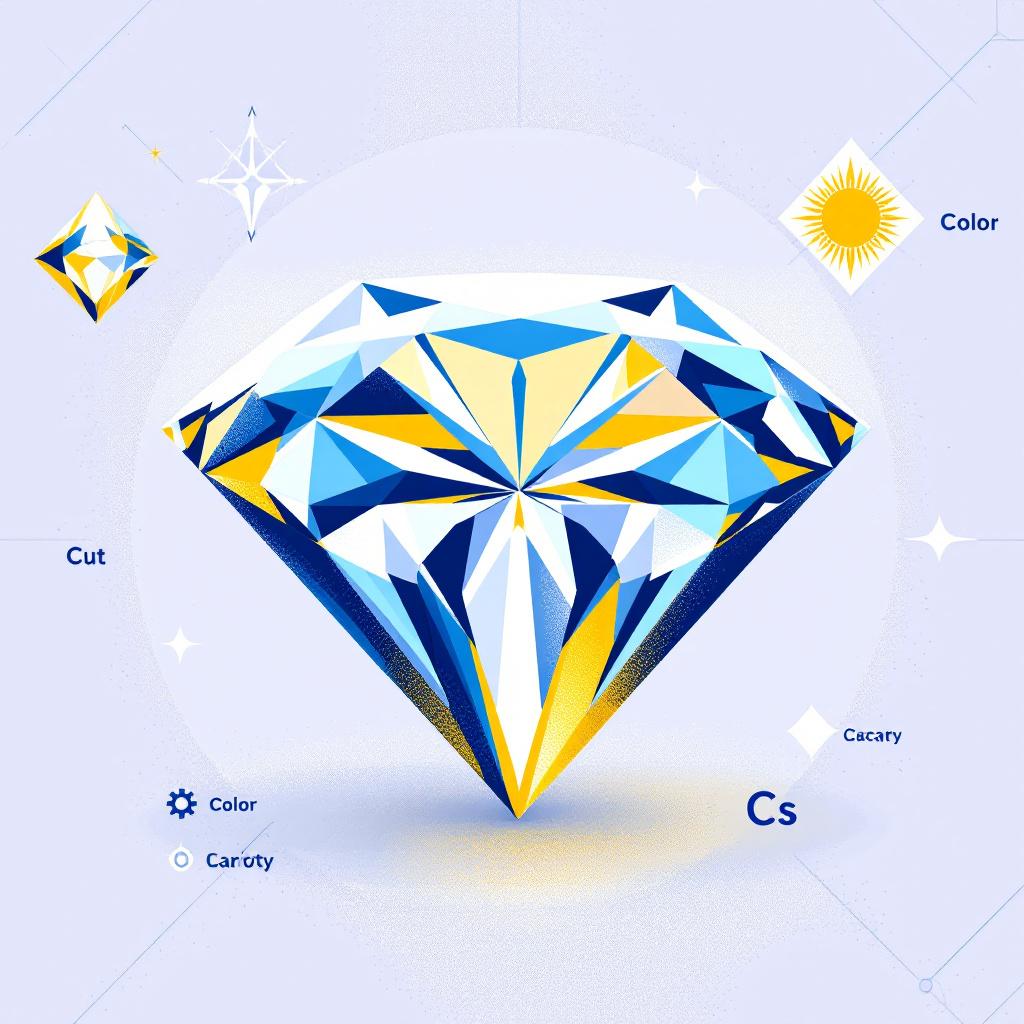Rough Diamond vs Polished Diamond: What’s the Difference?
By LukhiDiamond — The definitive, buyer-friendly, industry-informed guide to understanding rough (uncut) diamonds and polished (cut) diamonds. Learn how they form, why prices differ, how to evaluate, and when to choose each for jewellery, investment, or industrial use.
Rough diamonds are the raw, natural form that carries unique character and larger weight-for-value; polished diamonds are cut and finished stones optimized for brilliance, predictable grading and mainstream retail pricing. Choosing between them depends on taste, budget, intended use and value expectations.
What are Rough Diamonds?
Rough diamonds — also called raw or uncut diamonds — are crystalline carbon formed under high-pressure, high-temperature conditions deep in the Earth. They usually surface in host rocks (kimberlite, lamproite) and appear as octahedral, dodecahedral or irregular crystals with natural skin, mineral coatings, and matrix attachments. Rough diamonds can range from industrial-grade fragments to gem-quality crystals suitable for cutting into polished stones.
Shop examples (loose rough diamonds & rough collections): Rough & Raw Diamonds Collection.
What are Polished (Cut) Diamonds?
Polished diamonds are rough diamonds that have been planned, cleaved or sawed, shaped, faceted and polished to enhance light return and appearance. Polished stones are evaluated by the industry standard 4Cs (Cut, Color, Clarity, Carat) and graded by labs for retail. Polishing optimizes the optical properties (brilliance, fire, scintillation) but reduces carat weight.
Explore loose polished varieties and cut diamonds in our Loose Diamonds Collection.
Formation & Origins — From Mantle to Mine
How diamonds form
- Depth & conditions: formed 140–190 km below Earth's surface under high pressure & temperature.
- Mineral transport: brought to surface by volcanic eruptions within kimberlite/lamproite pipes.
- Timeframe: formation over hundreds of millions to billions of years.
Rough diamonds may undergo natural abrasion and coatings during transport, giving them distinct skins and surface features that influence cutting decisions.
Grading: How We Evaluate Rough vs Polished
Grading rough diamonds
Rough grading focuses on: weight (carat), shape, internal and surface inclusions visible to loupe, potential yield (how much polish can be extracted), and color. Experienced sorters estimate the best cutting plan to maximize value while considering the rough's morphology.
Grading polished diamonds
Polished diamonds receive formal grades: Cut, Color, Clarity, Carat — with certificates from labs for traceability and resale. Polished grading is standardized; rough grading is more subjective and relies heavily on cutter expertise.
Value & Pricing Differences
In general, rough diamonds are priced per carat at wholesale rates and often substantially cheaper than equivalent polished stones due to the risk and work required. The final polished value includes labor, loss of weight (typically 40–60% depending on cut plan), and added retail margins.
| Item | Approx. Price per Ct | Notes |
|---|---|---|
| Gem rough (uncut) | $100–$3,000+ | Varies by color, clarity, rarity |
| Polished (retail) | $1,000–$15,000+ | Depends on cut, certification |
Diamond Cutting & Polishing — Step-by-step
This section explains the technical workflow used by cutters to transform rough into polished stones.
1. Planning
Detailed mapping (including laser scanning) to determine the best yield and minimize inclusions. A good plan balances carat retention and optical brilliance.
2. Cleaving / Sawing
Breaking the rough into manageable pieces or sawing along structural weak planes.
3. Bruiting or Preforming
Shaping the stone to the intended outline (round, fancy shapes).
4. Faceting & Polishing
Applying and polishing facets in sequence to create optical symmetry and maximize light return.
5. Final Inspection & Grading
Assessing weight, measurements, finish and clarity post-polish. Then sending to a lab for certification if required.
20+ Key Differences — Quick Comparison Chart
| Aspect | Rough Diamond | Polished Diamond |
|---|---|---|
| Appearance | Natural, uneven skin, irregular shape | Symmetric, faceted, sparkly |
| Value predictability | Less predictable | Highly standardized |
| Weight retention | Full weight until cut | Reduced due to cutting |
| Certification | Rarely certified | Commonly certified (GIA, etc.) |
| Use | Unique jewelry, collectors, industrial | Engagement rings, investment, fine jewelry |
| Market | Wholesale, niche | Retail, mainstream |
| Risk | Higher (yield, inclusions) | Lower (documented grade) |
| Customization | High (design around stone) | High (many cuts available) |
| Emotional appeal | Raw, authentic, rustic | Classic, brilliant, traditional |
Use-Cases: Jewellery, Investment, Industrial
Rough for jewellery
Designers creatively use rough diamonds for minimalistic, organic rings and avant-garde pieces where the raw aesthetic is desired.
Polished for jewellery
Polished stones remain the dominant choice for classic engagement rings and high-end jewellery where brilliance and certification matter.
Industrial use
Lower-quality rough diamonds (tiny fragments, heavily included) are used in cutting, drilling and wear-resistant applications.
Buying Guide — Rough Diamonds (Step-by-step)
- Define purpose: jewellery, collection, or investment?
- Examine photos & videos: ask for multiple angles and measurement scales.
- Request weight & origin info: carat weight, country of origin if available.
- Ask about treatment: confirm if stone is natural and untreated.
- Negotiate based on yield estimation: understand likely polished yield.
- Verify seller credentials: buy from established suppliers (manufacturer pages, company history).
For sourcing rough pieces, view verified rough inventory: Loose uncut rough raw diamonds.
Buying Guide — Polished Diamonds (Step-by-step)
- Set budget & desired 4Cs
- Request lab report: insist on an independent certificate for the stone
- Compare visually: look at light performance photos or videos
- Check return policy & guarantees
- Buy from trusted listings and request serial numbers
Explore polished & loose diamonds available at LukhiDiamond: Loose Diamonds.
Pros & Cons — Quick Reference
Rough Diamonds — Pros
- Unique, raw aesthetic
- Lower price per visible carat
- High creative customization
- Collectible rarity (certain colors & formations)
Rough Diamonds — Cons
- Higher uncertainty about final value
- Often no certificate
- Requires skill to evaluate
Polished Diamonds — Pros
- Standardized grading
- Predictable resale value
- Maximum optical performance
Polished Diamonds — Cons
- Higher retail price
- Weight loss during cutting
Care & Maintenance
Caring for rough stones: avoid harsh abrasion that may damage natural skins or detach matrix. Polished diamonds: routine cleaning in warm soapy water and soft brush; professional ultrasonic cleaning for deeper cleaning when appropriate.
Design Tips — Using Rough vs Polished
- Let rough stones dictate setting: bezel or prong that complements natural angles.
- Polished stones pair best with symmetric, classic settings to showcase brilliance.
- Mixed-style pieces (rough center + polished accents) combine authenticity with sparkle.
Infographics & Visual Aids
Below are placeholder images intended for final production — replace with high-resolution WebP exports to match brand style. All images use lazy loading and descriptive alt text.


SEO, Schema & On-Page Checklist (for Shopify publishers)
JSON-LD product/article schema is included below for search engines and rich results. Use canonical linking when deploying. Ensure images are optimized and served via CDN with proper width/height attributes to improve CLS.
Frequently Asked Questions (FAQs)
1. What is the main difference between rough and polished diamonds?
Rough diamonds are uncut natural crystals with natural skin and irregular shapes; polished diamonds are cut and polished to standardized facet patterns to maximize brilliance.
2. Are rough diamonds cheaper than polished ones?
Generally, yes on a per-visible-carat basis — but final polished yield and quality can change value markedly.
3. Can a rough diamond be certified?
Some roughs can be submitted for origin or type testing, but standard laboratory grading certificates apply to polished stones. Ask your supplier about any available documentation.
4. How much weight is lost when polishing a rough diamond?
Typical yield ranges from 40% to 60% retained after cutting, but it depends heavily on shape, inclusions and cut plan.
5. How do I choose between rough and polished for an engagement ring?
Choose rough for a unique, natural aesthetic and polished for a classic, brilliant look with standardized resale value.
6. Can rough diamonds be used for inheritance or investment?
Rough diamonds can be collectible, but polished diamonds with certs are typically preferred for mainstream investment due to liquidity and standardized market pricing.
7. Are rough diamonds ethically sourced?
Responsible suppliers disclose origin and ethics. Ask for supply-chain information and work with reputable dealers to minimize risk.
8. Do rough diamonds sparkle?
Rough diamonds usually do not exhibit the same brilliance as polished stones because they lack precise faceting that enhances light return.
9. What should I ask a seller when buying rough diamonds?
Ask about weight, origin, treatment history, available images/videos, estimated yield, and return policy.
10. Can I commission custom work with rough diamonds?
Yes — many designers craft bespoke pieces that embrace the raw form; a good jeweler will adapt the setting to the stone’s natural lines.
Call to Action (CTAs)
If you want to explore real inventory, request stones or start a custom design, visit our collections and product pages or contact our team.
Explore Rough Diamonds View Loose Polished DiamondsReal experience & E-E-A-T insights from LukhiDiamond
Since 2013, LukhiDiamond has supplied rough and polished diamonds to designers and wholesale buyers worldwide. Our manufacturing background and decades of cutting experience allow us to advise on optimal yield, ethical sourcing, and design-forward uses of rough stones. When you contact us, our team shares measured photos, history, and expected cutting outcomes so you can make an informed decision. Learn more about our company and history on our About page.
Quick decision guide
- Choose rough if you want authenticity, lower visible carat price, and bespoke design.
- Choose polished if you want certified quality, predictable brilliance and resale value.
Final summary — which should you choose?
Both rough and polished diamonds have clear advantages. Rough diamonds offer raw beauty and a story; they’re ideal for unique jewellery and collectors. Polished diamonds deliver predictable sparkle, certification and market liquidity. Your decision depends on aesthetics, budget, and whether you prioritize collectibility or resale stability.
To see current rough & polished inventory, check our collections: Rough and Polished.



Leave a comment
This site is protected by hCaptcha and the hCaptcha Privacy Policy and Terms of Service apply.